General Laboratory & Measurement Equipment
Abacus Scalar
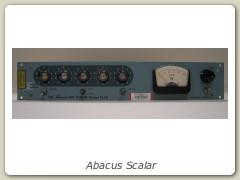
This scalar dates back to the 1950s-60s. Scalars were used primarily in nuclear physics experiments as pulse counters. They used Dekatron tubes which are gas filled decade counting tubes. The number of counts were indicated by the glowing elements.
Sound Level Meter
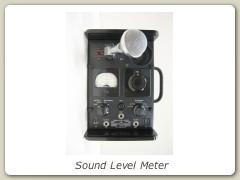
Sound Level Meter
Audio Frequency Microvoltmeter
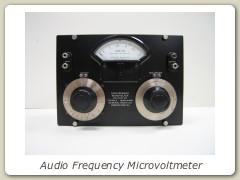
Audio Frequency Microvoltmeter
Autotransformer
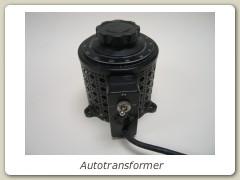
An early model of an autotransformer. The autotransformers are used extensively in physics laboratories to convert 110V AC to variable AC voltage.
Brooks Inductometer
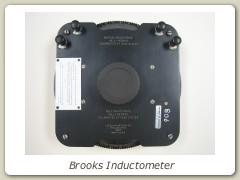
The Brooks Inductometer was used in applications where it was necessary to vary the self inductance of a circuit or the mutual inductance between two circuits while keeping the resistance constant.
D.C. Ammeter
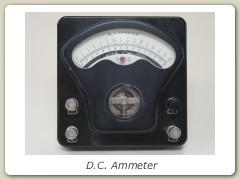
This D.C. Ammeter was used extensively in the Department for electrical measurements for many years.
D.C. Microammeter

The Department used this D.C. Microammeter for many years to make electrical measurements. It was purchased in 1921.
Digital Multimeter
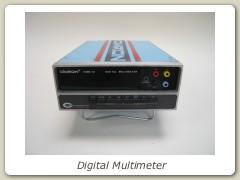
Cimron DMM51 Digital Multimeter. An example of a very early version of a digital multimeter. The move from analog to digital was a big step in experimental and demonstrational equipment.
Fluxmeter
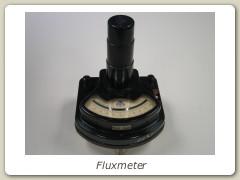
This CENCO Fluxmeter was used to measure magnetic flux by the current that it generates in the coil.
Microphone Hummer
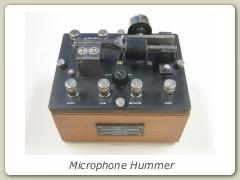
A Microphone Hummer provides current at a constant frequency of 1000Hz and operates from a 6-volt battery. The frequency is kept constant by a tuning fork. This instrument was used as a source for bridge circuits. Headphones were used to detect the null point.
Milliammeter
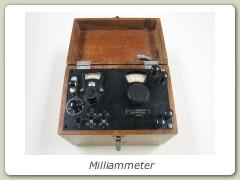
Weston D.C. Milliammeter is a sensitive ammeter used to measure small electric currents, calibrated in milliamperes.
Millivoltmeter
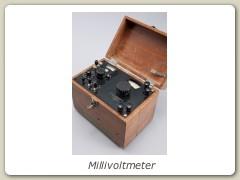
Leeds and Northrup Millivoltmeter was used in conjunction with thermocouples to measure tempterature
Mohr-Westphal Balance
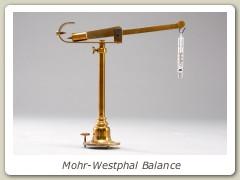
This Mohr-Westphal Balance made by Gaertner Co. was used to demonstrate Archimedes’ principle of density and specific gravity. It was mass produced during the 1920’s and the cost was about $20, which is about $250 in 2007 dollars. It is believed that most were shipped to the United States from Europe for distribution.
Moving Coil Galvanometer
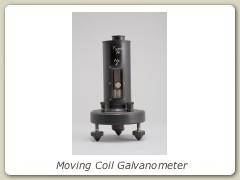
The Moving Coil Galvanometer was used extensively for electrical measurements. Current through the galvanometer was measured by measuring the deflection of a light beam reflected from the mirror, attached to the moving coil of the galvanometer, on a scale one meter away. This galvanometer was purchased in 1924. The 1918 Leeds and Northrup Company catalog lists the price to be $90, or $1236 in 2007 currency
Multichannel Analyzer
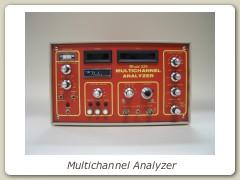
This multichannel analyzer was made in the 1970’s-80’s and was used by Professor Richardson for γ-ray spectroscopy experiment in an instructional laboratory.
Norelco Strip Chart Recorder
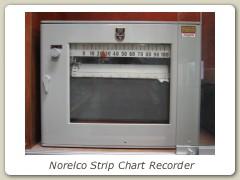
This huge instrument (from modern standards) was used to record data as a function of time. These recorders were superceded by smaller instruments, shown elsewhere in this collection, and have now given way to PC-based instruments.
Optical Pyrometer
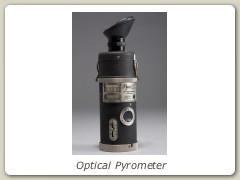
Optical Pyrometers have been used for over 100 years to make a non-contact measurement of the temperature of an object that is red hot. For example, optical pyrometers have long been used to measure the temperatures of molten metals, hot filaments, and hot cathodes. The latter are used as electron emitters in vacuum tubes and other devices. The human eye is used to match the brightness of a calibrated filament in the instrument with the hot object, whose temperature is to be measured
Potentiometer
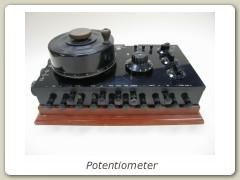
A Potentiometer was used in conjunction with a standard cell and a moving coil galvanometer for highly precise measurements of potential differences and e.m.fs.
Resistance Box
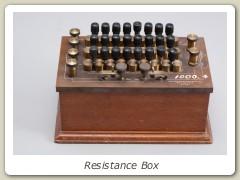
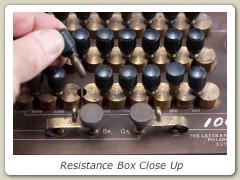
A Resistance Box was used to provide variable resistance in an electrical circuit. Resistance was adjusted by removing or adding the appropriate keys in the slots.
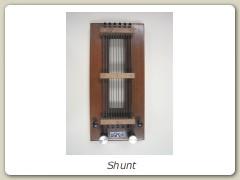
A Shunt was used for precision measurements of large currents. This shunt consists of a precise 0.1 Ohm resistance made of manganin (which has a very low temperature coefficient of resistivity). Current was measured by measuring potential difference across the shunt.
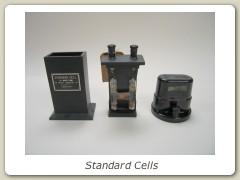
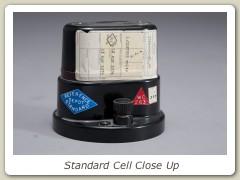
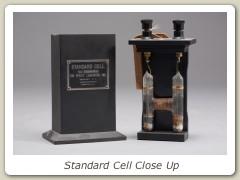
Standard Cells were used as a calibration standard of e.m.f. The cadmium cell was adapted as the standard cell in 1908 by the London International Electrical Congress. The liquid electrolyte is cadmium sulphate, the anode is made of mercury and the cathode is made of cadmium. The cell on the right has an e.m.f. of 1.0187055 volts. The cell on the left, shown open, was purchased in 1936.
Tek Oscilloscope 321
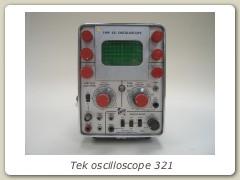
The Tektronix Type 321 Oscilloscope is the first battery powered scope that Tektronix produced. It is almost completely solid-state and weighs less than 9 kg, definitely a featherweight compared to the other Tektronix scopes of the era. The 321 was made until 1964.
Tektronics Storage Oscilloscope

Vacuum tube oscilloscopes like these were the workhorses of any research laboratory. This scope was introduced in 1968 at a cost of $2,600 ($15,000 in 2007 currency). The data in the form of oscilloscope traces were recorded by oscilloscope camera. The vacuum tube oscilloscopes slowly gave way to their much smaller transistorized versions in the 1970’s. Today mostly digital oscilloscopes are used so that data can be sent to a computer for analysis. Moreover, digital oscilloscopes themselves are able to do a variety of fairly sophisticated data analysis tasks.
Weston AC/DC Voltmeter
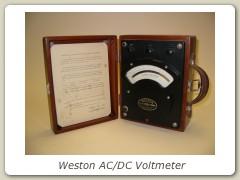
This AC/DC Voltmeter was used extensively in the Department for electrical measurements for a number of years. The voltmeter was purchased in 1929.
X-Y Recorder
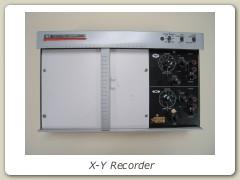
X-Y and Strip-Chart Recorders were the workhorses of any research laboratory for a very long period of time. They were used to record x vs. y signals on a graph paper, or a signal vs. time on a strip chart. They have slowly given way to PC-based data acquisition systems.
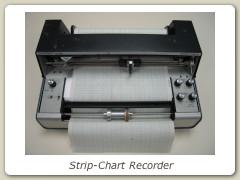
X-Y and Strip-Chart Recorders were the workhorses of any research laboratory for a very long period of time. They were used to record x vs. y signals on a graph paper, or a signal vs. time on a strip chart. They have slowly given way to PC-based data acquisition systems.